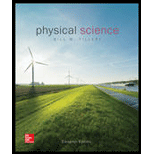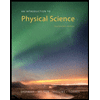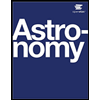
Concept explainers
On an annual basis, the precipitation in a watershed is 1,778 mm, the actual evapotranspiration is 914 mm, and 61 percent of the surplus precipitation is runoff. what is the percentage contribution of each component of the watershed budget?
The percent contribution of actual evaporation, groundwater discharge andsurface runoffcomponent of the watershed budget.
Answer to Problem 3PEB
Solution:
Explanation of Solution
Given data:
The precipitation in a water is
The actual evapotranspiration is
Formula used:
Write the watershed budget that can be expressed as precipitation equals actual evaporation plus groundwater discharge plus surface runoff:
Here,
Explanation:
Rearrange the watershed budget equation to derive an equation for each component in terms of the other components, and then write an equation that expression
Therefore, rearrange in terms of
Now, rearrange in terms of
And,
Substitute
Substitute
Substitute
The percentage is the ratio of each component to
Calculate the percentage of each component of the watershed budget.
For actual evaporation,
Substitute
For surface runoff,
Substitute
For groundwater discharge,
Substitute
Conclusion:
The percent contribution of actual evaporation, groundwater discharge andsurface runoff component of the watershed budget are
Want to see more full solutions like this?
Chapter 24 Solutions
Physical Science
Additional Science Textbook Solutions
Cosmic Perspective Fundamentals
University Physics (14th Edition)
Schaum's Outline of College Physics, Twelfth Edition (Schaum's Outlines)
The Physics of Everyday Phenomena
The Cosmic Perspective (8th Edition)
Physics: Principles with Applications
- What is the most common process of electricity generation in the U.S today?arrow_forwardA 5 cubic meter container is filled with 840kg of granite[density is 2400 kg per cubic meter] and the rest of the volume is air[density is 1.15 kg per cubic meter].arrow_forwardWhat is the net water budget for a region where the annual rainfall is 890 mm and the potential evaporation is 635 mm? A watershed has an area of 9.84 x 102 km2 in a region where the average annual surface runoff is 305 mm. What is the volume of the surface runoff? Tracer dye is introduced to a sand and gravel aquifer in a gravel pit. The dye appears 28.5 hours later at a spring located 3.8 km away from where the dye was introduced. What is the groundwater flow velocity?arrow_forward
- What is the bulk density of the dry soil?arrow_forwardThe Ocean's level is rising about 1.5 millimeters (mm) per year. At this rate, in how many years will the sea level be 3 m higher than it is now? You must include a SKETCH to solve.arrow_forwardWhat are the two causes of overloading?arrow_forward
- The ploughing of field helps in the conservation of water in the soil. Explain.arrow_forwardWhat are the Causes of overloading?arrow_forwardAn EPA standard for microparticulates in air is limited to a maximum of 50.0 ?μg/m3. Calculate the maximum ?μg microparticulates allowed by EPA standards in a room with dimensions 10.0 ft x 8.25 ft x 12.5 ft.arrow_forward
- The Grinnell Glacier in Glacier National Park had a surface area of 1,020,009 square meters in 1966. Its area was 615,454 square meters in 2005. The 2005 surface area is what percentage of the 1966 surface area?arrow_forwardGrinnell Glacier is a glacier within Glacier National Park. In 1850, the area of the Grinnell Glacier was 2,329,918 square miles. By 1950, its mass had dropped to 1,336,855 square miles. How much area has been lost by the glacier between 1850 to 1950, measured in square kilometers?arrow_forwardWhich one of the following strongly threatens biodiversity? A) Eragile ecosystems such as mangroves and wetlands B) Inaccessible habitates in the Himalayas C) Desstruction of natural habitates and regetation and Jhum cultivation D) Creation of biosphere reservesarrow_forward
 An Introduction to Physical SciencePhysicsISBN:9781305079137Author:James Shipman, Jerry D. Wilson, Charles A. Higgins, Omar TorresPublisher:Cengage Learning
An Introduction to Physical SciencePhysicsISBN:9781305079137Author:James Shipman, Jerry D. Wilson, Charles A. Higgins, Omar TorresPublisher:Cengage Learning AstronomyPhysicsISBN:9781938168284Author:Andrew Fraknoi; David Morrison; Sidney C. WolffPublisher:OpenStax
AstronomyPhysicsISBN:9781938168284Author:Andrew Fraknoi; David Morrison; Sidney C. WolffPublisher:OpenStax

